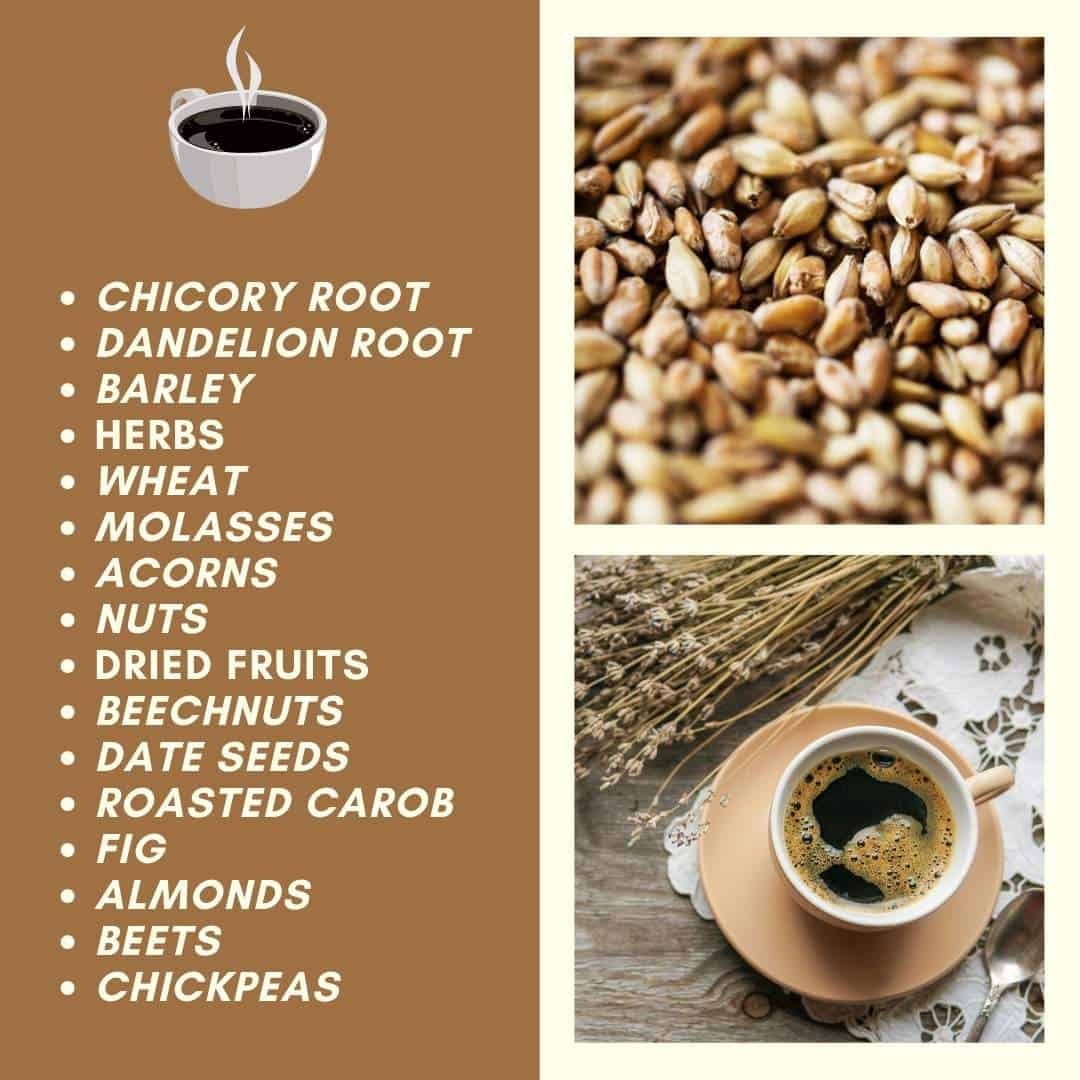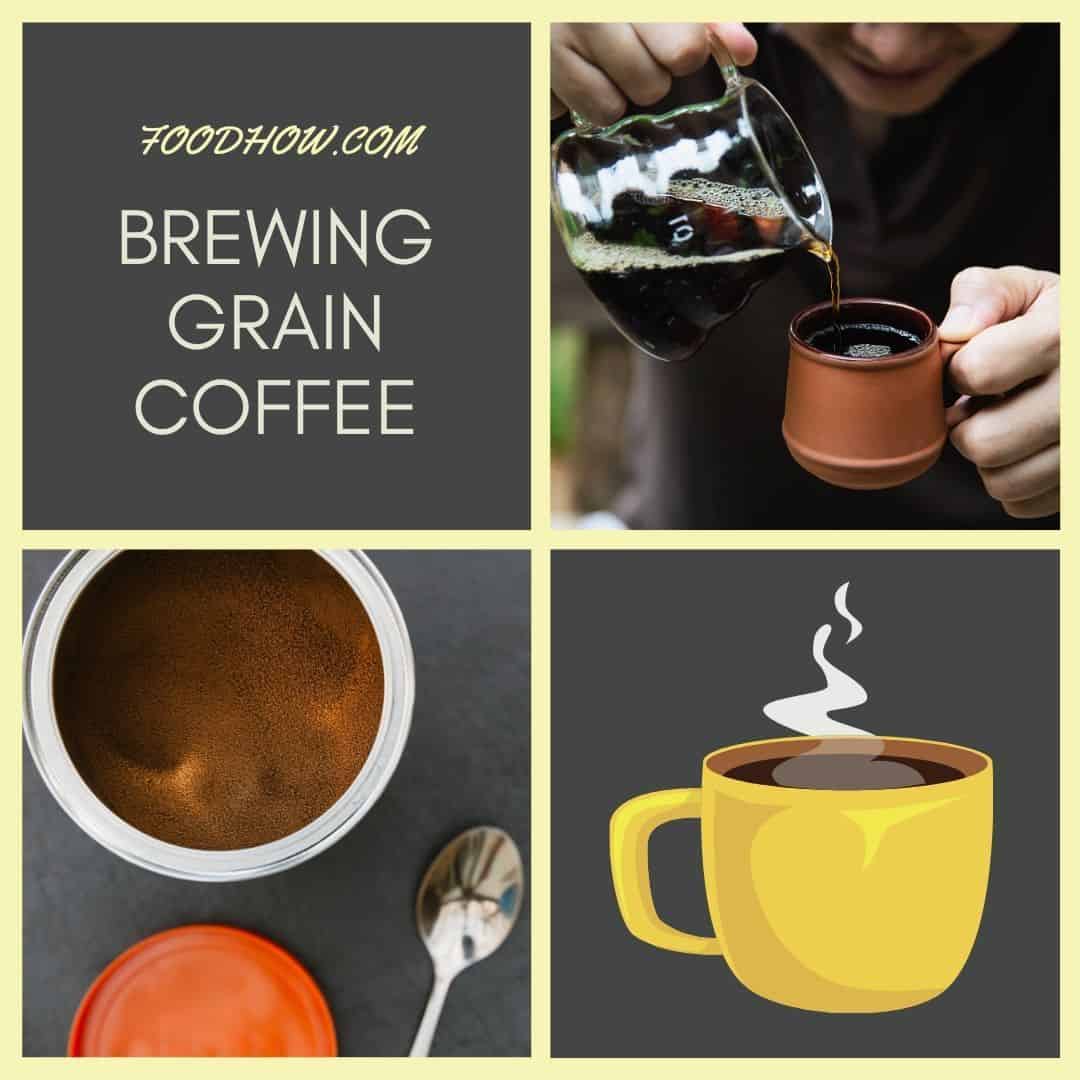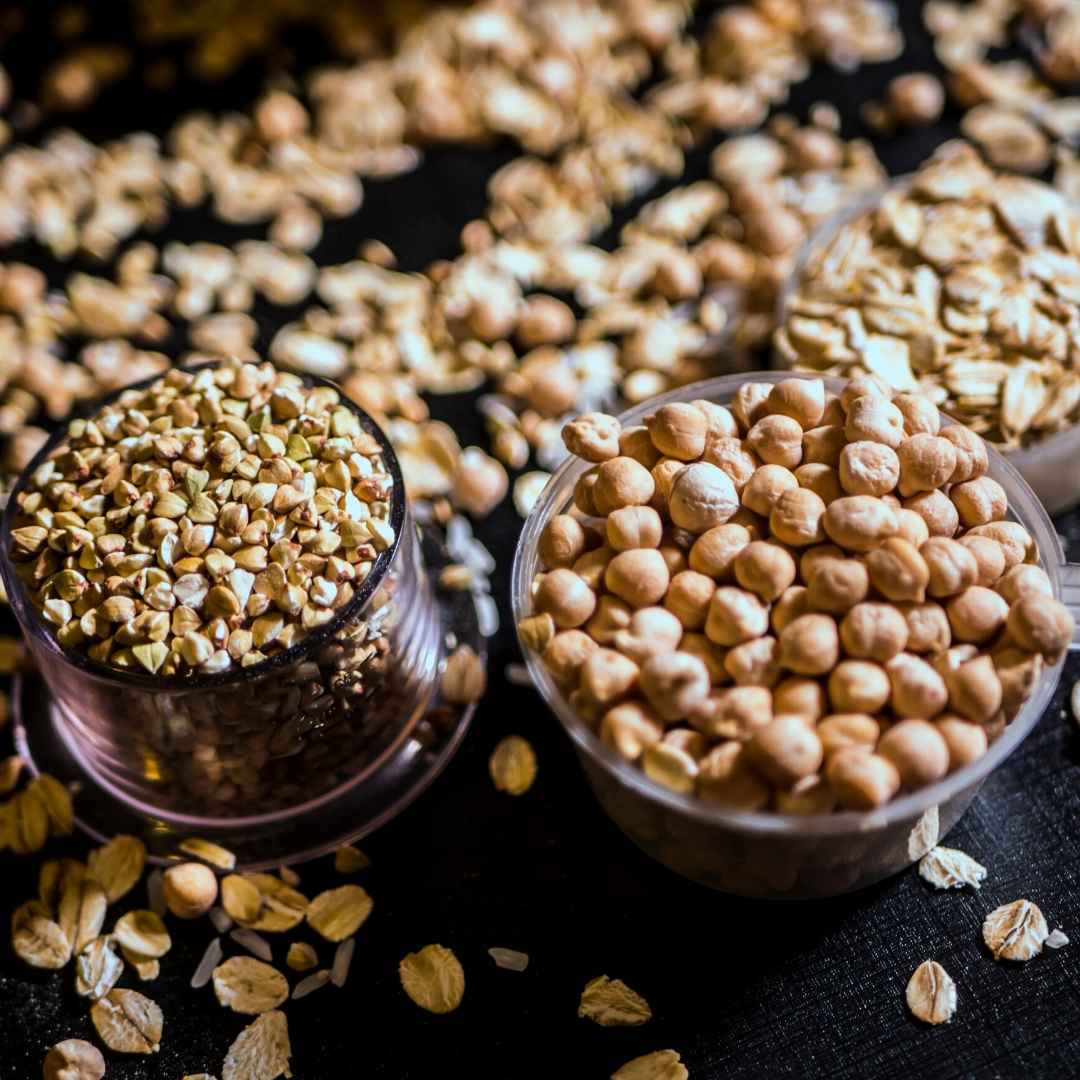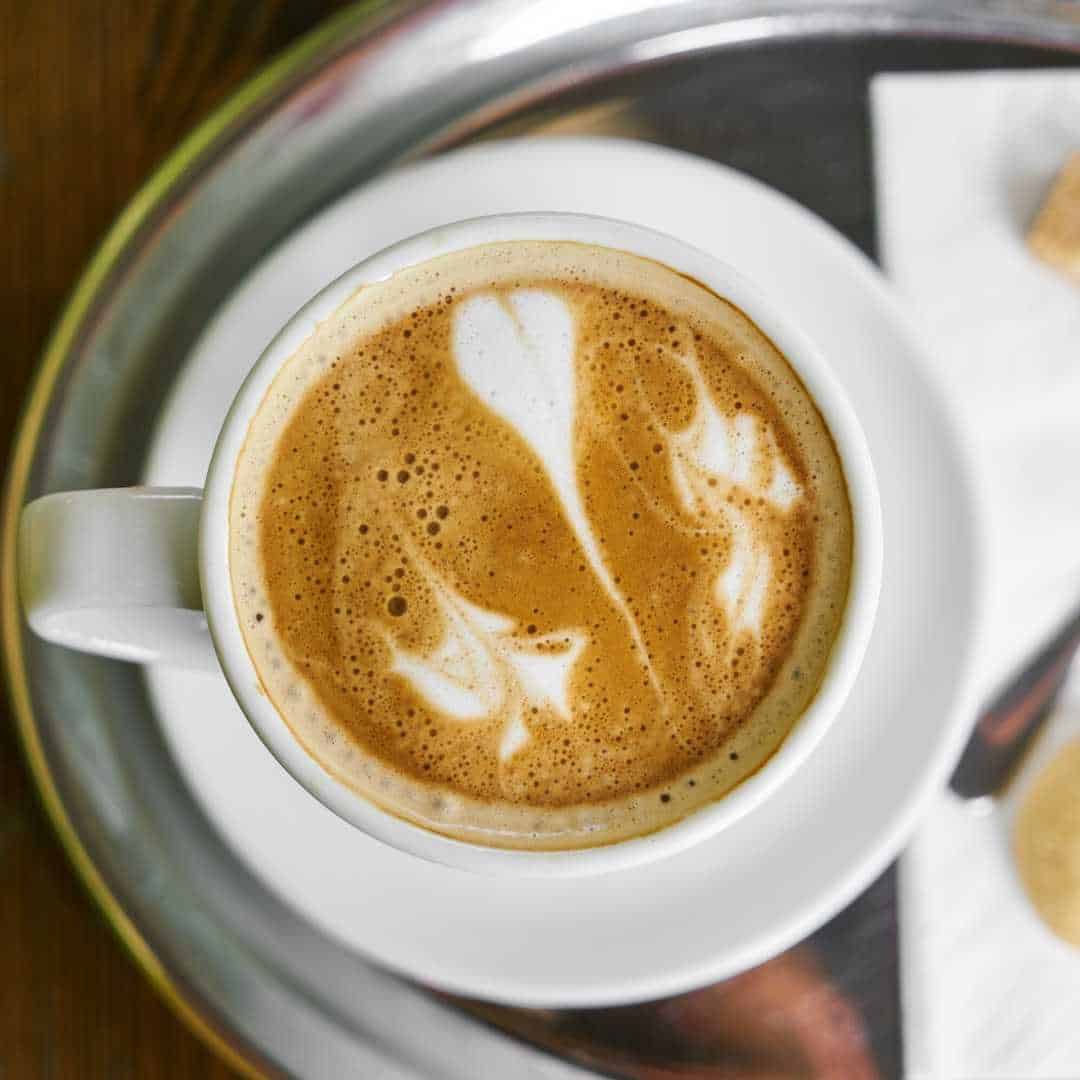Coffee and caffeine are contentious subjects in the 21st century. Proponents argue for the benefits of regular caffeine consumption, while many swear that it is harmful and can cause many of the ailments of modern man.
Whatever your stance on caffeine, there’s no denying that coffee isn’t going anywhere! However, many around the world are educating themselves about healthier alternative drink options made of roasted grains, herbs, and plants.
These natural coffee alternatives are what I will talk about in this post.
What Is Herbal Grain Coffee?

Grain coffee is a coffee alternative made from herbs, grains, vegetables, dried fruits, and other natural ingredients. Nuts and seeds are popular options, meticulously selected for their various flavors before being roasted and ground down to a brewable powder.
These coffee alternatives are slowly making their way into the health sector, appearing in retail outlets, and making a dent in global daily coffee sales.
There are many different types available on the market, and many of them contain therapeutic, anti-stress, and antioxidant agents, giving you lots of beneficial nutrients while supplying a delicious, hot substitute for your regular cup of Joe.
For those looking for healthy alternatives but dread being without their daily cup of coffee, herbal grain coffees offer a wonderful alternative.
The History of Coffee Substitutes
Although the use of grains has recently gained popularity as a way to eliminate caffeine, the concept has been around since the Civil War. Mixing chicory with coffee became popular in Louisiana due to the shortage of coffee during this time.
Alternative Coffee Drinks Through The Ages:
- Roasted chickpeas were used as a replacement in Germany towards the end of the 18th century.
- Chicory was used as an option to replace caffeine in France in the early 19th century.
- Dandelion was introduced as a substitute in the 1830s in North America.
- In 1895, C.W. Post created Postum, a coffee-like drink made from roasted wheat bran, wheat, and molasses.
How Grain Coffee Was Used?
For the last two centuries, coffee has served many purposes – beyond being the primary beverage of choice. Replacement options became available and increased in popularity when coffee became scarcely rationed in the Civil War, and then again during WWII.
Alternative herbal and grain drinks have been used for:
- Medicinal purposes
- Ceremonial reasons
- Religious reasons
What Is Grain Coffee Made of?

This java-like drink is made from an assortment of cereal grains, herbs, nuts, plants, and roots. The ingredients can be combined together to change the level of bitterness and/or sweetness.
Common ingredients include:
- Chicory, or dandelion roots
- Barley, malted barley, or wheat
- Molasses
- Acorns, beechnuts, date seeds, or roasted carob
- Fig
- Herbs
- Dried fruits
- Roasted vegetables
- Nuts
- Rye
- Almonds
- Date seed
- Red beets, or sugar beets
- Chickpeas
Varieties Available
The grains are roasted and processed into a crystalized, whole ‘bean’, or powder form. You can purchase grain coffee or make it yourself.
Available varieties:
- Roasted: The varieties available include light, dark, and medium roast.
- Ground: This includes options of fine, medium, and coarse.
- Pressed
- Freeze-dried
Best Grain Coffee Drinks To Try
When it comes to alternatives to a real coffee, then there are not that many available. I think I have tried most of them, and to be honest, all I have tried have been quite good.
Below I will cover two of the best grain coffees that I have found to be the most delicious and taste closest to the regular cup of Joe. Even my mum likes them, although she calls them ‘fake coffee.’The first one is instant, and the second one is ground coffee, so you can have whichever type you prefer more.
1. Inka – Instant Grain Drink
I love the Inka instant roasted grain drink. This Polish coffee substitute comprises of roasted rye, chicory, barley, and sugar beet. It has no caffeine or artificial ingredients in it.
Compared to all coffee substitutes, I find that I can drink this even without sugar or creamers. It’s not overly bitter, but it is not bland either. However, if you add some sugar or honey and some cream, this drink will be absolutely irresistible. It has a nice aftertaste that is familiar to all coffee lovers.
I can enjoy a nice hot drink late in the evening and still sleep like a baby. I can also confidently recommend this for anyone trying to quit coffee. Start on it and give it time. For me, it was love at first sip, but I still got some caffeine withdrawal symptoms because this one is entirely caffeine-free.
Pros
- Fast and easy to make.
- No artificial sweeteners.
- No caffeine.
- Non-acidic.
- Ingredients used have a lot of nutrients.
- An authentic coffee-like flavor.
- Nice frothy top.
Cons
On the label, the ingredients and use directions are in Polish.
2. Beyond – Natural Caffeine Free Coffee Alternative
Another brand of roasted grain beverage that you will find plenty in my pantry is Beyond roasted grain drink.
This one has a flavorful and nutty chocolaty taste to it. It also tastes surprisingly similar to a real cup of Java, but that is probably up for debate.
This one is not instant, so I do use my drip coffee maker or sometimes fresh press French press to brew it. If you use regular drip filters to make it, then I suggest doubling or even triple the recommended amount of grains.
There is much to like about this brand, including the fact that it’s a GMO-free product. As you know, I am very particular about non-GMO foods.
The product specs assure that the rye, chicory, and barley used here are non-GMO. Also, it has a wonderful aroma as well. The brew itself is dark and thick, reminiscent of coffee.
The grains remind me of actual coffee beans. It might not taste like real coffee to you if you are so far down the caffeine addiction avenue, but it’s a delicious drink nonetheless. But it is as close to a real thing as you can get when it comes to coffee alternatives.
Pros
- Unique chocolaty and nutty-like flavor.
- Ingredients are non-GMO.
- Non-acidic.
- Very nutritious.
- Caffeine-free.
- It seems to help my digestion.
Cons
Bit pricey. (However, I do use 2-3 tbsp instead of the recommended one tbsp to get the more robust, more coffee-like flavor).
How Do You Brew Grain Coffee?

You can brew grain granules in several ways, depending on the exact drink. You can purchase them in instant, powder, or ‘bean’ form and brew them using your method of choice. You can also make the grounds yourself with grains, fruit, nuts, herbs, and/or vegetables.
Some ways that you can brew grounds include the following:
- Place your grounds in a french press and let them sit for 10-15 minutes.
- Brew like regular coffee in a drip coffee maker or percolator.
- Place one tablespoon of your grains in a pot and boil for 5-10 minutes before straining.
- Make a cold brew. Place your grounds in a grain bag and soak it in cold water for 24 hours. This method is best for coarse grounds.
How To Make Your Own Coffee Alternatives?

You can find many creative ways to enjoy these drinks. Here are some recipes that you can try to make your own caffeine-free, low-acid coffee substitute at home.
You can even add a teaspoon of regular coffee to any of these recipes for a hint of caffeine. Alternatively, combine some of these recipes together for a unique flavor.
Some ingredients in these recipes can be harvested in your backyard, and others can be found in supermarkets and health food stores.
These recipes are not an exact science, so you can experiment with and mix different ingredients and try different roasting and brewing methods.
Wheat and Molasses Recipe
This recipe calls for 6 cups of cracked wheat, which you can buy or make yourself.
- Add a cup of milk, and a cup of molasses, and mix together. It should take on a paste-like consistency.
- Spread the paste on a baking sheet and roast at 300°F (148°C).
- Turn the oven to low when the paste browns, then leave on low until it’s crisp.
- Remove from the oven, break the pieces and grind them into a powder, and store in a sealed jar.
- When you are ready to enjoy, just add boiling/hot water.
Chickpea Recipe
- Roast chickpeas in an oven at 300°F (148°C) until they look about the same color as roasted coffee beans.
- Remove from the oven and grind the chickpeas with a coffee grinder.
- Boil the granules in water for 5-10 minutes, until it looks like fresh-brewed coffee, then allow to stand for 3-5 minutes.
- Prepare as you normally would, add some sweeteners, milk, or cream.
Barley Recipe
- Place a thin, single layer of barley on a baking sheet. Put in an oven and set at 425°F (218°C).
- Bake in the oven until dark brown. (Mix the barley a few times to get more even roast).
- Grind the barley in a blender or grinder.
- Add one teaspoon per cup of hot water.
Parsnip Recipe
- Cut or grate a batch of fresh parsnip roots into small pieces and leave them to stand for a few days.
- When the roots are dehydrated, place them on a baking sheet and put in an oven set at 400°F (204°C).
- Take them out of the oven once they are a very dark brown color. That should take about 20 minutes. (Keep watch, so you won’t burn them).
- Steep the chunks in hot water for 3-6 minutes. (1 tablespoon per cup).
- Strain the mixture and drink it.
Chicory and Dandelion Recipe
If you grow roots such as chicory or dandelion, the time of the year you harvest them makes a difference in how sweet the taste will be. Early spring harvests are sweeter than fall harvests. However, if you don’t, then you can buy some from Amazon here.
- Spread out the dandelion and/or chicory root pieces in a single layer on a baking sheet. Put them in the oven and roast at a temperature of 350°F (176°C) oven for 15-20 minutes, stirring halfway through. The longer you roast, the more intense the flavor is the drink.
- Boil 16-20 ounces of water (about two cups) with one tablespoon of roasted chicory and dandelion root pieces.
- Simmer for 2-3 minutes. (You can add a bit of cinnamon for taste).
- Strain the coffee using a fine mesh strainer.
Acorn Recipe
- Boil acorns for 20 minutes until they turn a dark brown in color.
- Once the acorns have cooled, remove the shell and cut the acorns into small pieces.
- Place the pieces on a cookie sheet in an oven set at 400°F (204°C) for 35-40 minutes.
- Grind the acorns in a grinder or blender until they reach a powdery consistency.
- Mix 1 tablespoon of the powder with 6 ounces of hot water.
- Let it steep for 3 minutes, then strain it into a clean cup.
- Now it is ready to drink. (Add sweeteners or milk if you desire).
How To Drink Grain Coffee?

This drink can be enjoyed in the same way as a regular cup of Joe. You can add creamer, milk, honey, or flavored syrups to your java-like beverage to appeal to your taste buds. Or you can drink it straight by using your favorite brewing method.
Additional ways to consume grain coffee include:
- Instead of using boiled water, use boiled or steamed almond milk and add honey. This makes a latte-like drink.
- Add 1-2 tablespoons of regular coffee to your cup, with milk, cocoa, or sugar.
- You can add a couple of tablespoons of grain coffee to your favorite brownie or cookie recipe for a sweet and robust taste with a hint of bitterness.
- If you prefer to drink your coffee iced, you can do the same with grain coffee. Prepare it the way you normally would, and then put it in a cup of ice cubes.
- You can drink it as a cold brew, shaken together with maple syrup and pure vanilla extract, and then poured over ice.
What Does Grain Coffee Really Taste Like?

Although grain coffee doesn’t actually contain coffee beans, this drink looks and tastes surprisingly like a real thing. This beverage comes in a variety of coffee-like tastes, ranging from bittersweet to nutty.
The brewing method that you use contributes to how strong, bitter, bold, and sweet the flavor is. If you cold brew your granules, the result is a sweeter, smoother, and more robust flavor.
You can purchase or make roasted grounds with unique blends of plants, grains, nuts, and roots for a delicious beverage that suits your tastes. The way the grains are blended or roasted determines the bitterness, boldness, and sweetness of the flavor.
If you are looking for a blend that is lightly sweetened, look for grounds that are lightly roasted with the following ingredients:
- Wheat molasses.
- Figs.
- Sugar beets.
- Carob adds a hint of creamy chocolate sweetness.
What Are The Benefits?
Coffee substitutes have increased in popularity due to their health and nutritional benefits. Research studies have shown that some of the nutrients found in the grains used to make these drinks can provide various beneficial nutrients.
Here are some of the benefits of drinking grain coffee:
- It is a good source of inulin fiber, which can improve your digestive health.
- May decrease blood sugar.
- It can help to reduce your caffeine intake.
- It may reduce inflammation.
- It decreases insulin resistance.
- It is energizing and rich in minerals, vitamins, and nutrients.
- Increases strains of good bacteria in the colon.
- Improves bowel function by reducing constipation.
- It could improve brain function and the immune system.
Related article: Are you looking for healthier alternatives, but can’t make it through the morning without your daily cup of Java? Try this powerful combo with mushrooms!
What Are the Side Effects?
There may be some side effects when it comes to grain drinks, depending on the specific ingredients.
The following is a list of some of the side effects associated with grain coffee:
- If you have an allergy to ragweed or birch pollen, avoid chicory.
- It has been known to trigger allergic reactions, including pain, swelling, and tingling of the mouth.
- There are high amounts of soluble fiber, which can produce bloating and flatulence.
The number of side effects found is minimal compared to regular coffee. I would suggest drinking grain coffee in moderation so that you can monitor how your body reacts.




Grain coffee seems definitely a better way to get started in the morning. I want to try it. This grain drink seems to have a lot of nutritious ingredients in it. Sounds good. The Inka instant sounds good. I would like to find something I could drink without adding anything to it, like without cream and sugar.
I didn’t know there were so many different types of roasted grain drinks available. The recipes look interesting to try too! Thanks!!